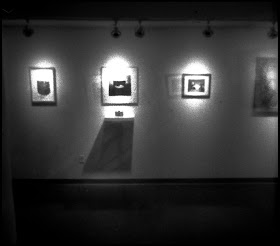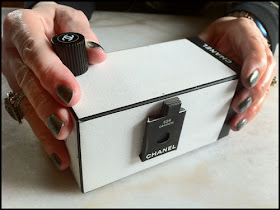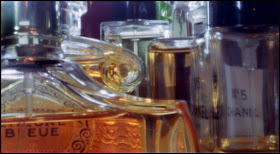Art openings tend to be relatively crowded events. There were 94 artists represented in one of the shows, so just a friend or two each would fill a good sized gallery. Opening up a regular tripod for an extended exposure wouldn’t be polite or safe. This calls for a 35mm camera, fast film and a flexible little Joby tripod.
I decided to use the Manic Expression Cube. I had used it at an art event this summer, so that seemed like a neat connection. Also, I was likely to have to place it in some less than optimum places. The rising front might give me some flexibility as to what was in the frame,
When we visited the George Eastman House two years ago, I had this fantasy of a large display of Kodak films that pilgrims like myself would want to purchase at this shrine to photography. It turned out they only had some Fun Savers and Portra 400 35mm film. After confessing my delusion to the shopkeepers, they also came up with Tri-X also only in 35mm. That struck me as a more historic choice and I bought a roll. I felt I had to save it for some special project. This seemed just the thing to use it for.
WARNING: Pinhole images made from small negatives with grainy film ahead!
The first event was the opening of a juried art show in Appleton, just north of where I live, which included all kinds of media. The picture selected for the show was the first exposure done with the 45mm Populist built to illustrate the Tenth Anniversary Populist Plans which give detailed directions on how to build one. After they had announced who was in the show, I was chatting with one of the jurors, who lives in Oshkosh. She mentioned that the curator organizing the show expressed an interest in also exhibiting the camera. I took it along when I delivered the picture.
They placed the camera on a shelf just under my photograph. It looked to me like something that had been excavated from a Mesopotamian tomb. I wrapped the Joby around the handrail of a stairway just opposite the picture. The place was packed, but it was at least a fifteen minute exposure so no one reflected or blocked enough photons from the same place long enough to be recorded.
There were artist’s statements on the wall next to each work, most of them impassioned multi-paragraph manifestos. I must have misunderstood the assignment. Mine was “This photograph was made on film with a hand-made cardboard pinhole camera.”
The exhibit was in a gallery with a mezzanine that wrapped around the room. There was also another gallery which could only be accessed by an elevator. I wrapped the tripod around the corner of the handrail that surrounded the balcony and we went up to see the works on the third floor. While we were gone, the presentation of awards took place. I received an Honorable Mention which I wasn’t there to accept, but my pinhole camera did get to see it.
The other show was “Then and Now” at the Oshkosh Public Museum which I’ve posted about several times.
Links: Rephotographic Project Reimagined · Reimagined Interiors · Hyperspace · Bimodal Stereo · Cameras at an Exhibition
The photographs were displayed alongside the historical image that inspired them. The Museum had 16 inch prints made. Pretty cool. I think mine hold up to the enlargement quite well. A little jarring to see my pictures mixed in with the razor sharp interpretations done with high-end digital cameras by the three commercial photographers who also participated. The opening took place on a Sunday afternoon and was quite well attended.
The tripod was attached to the only chair in the room, which no one was sitting in during the opening.
Here is the view in the other direction into the next room.
Deb Daubert, the curator who organized it, being interviewed by the local TV news.
They often have other events associated with an exhibit, and I gave a presentation on pinhole photography a week later. I went in the day before to make sure I didn’t have any technical surprises the next day. While l futzed around, I opened the shutter, then realized the camera wasn’t level so I quickly fixed it, but not fast enough to avoid an extra image of the windows.
The next day. I put the camera at the back of the room and opened the shutter just before I began the talk.
About ten minutes later, I asked the staff member who introduced me to close the shutter and bring the tripod to the front. I ended the talk with stereo photography for which I had given everyone red/cyan glasses.
Of course, two weeks later the pandemic happened and the museum has been closed. The exhibit is scheduled to run until May 24 so there’s some hope more people will get to see it. The sign predicts they’ll reopen on April 15.
The museum in Appleton has decided to extend the show until the end of the summer.
To use up the film, I took advantage of the lockdown to photograph two of my partners in crime on Main Street without any cars parked in front of them. For the Oshkosh exhibit, I took pictures in both of them, but neither ended up in the show, primarily because I couldn’t find a match in the archive for them.
Camera Casino made the print that was in the Appleton show.
It was matted and framed at the Art Haus across the street.
In the middle of all this, I submitted three images from last summer done with the Manic Expression Cube to the juried Pinhole Photography show in Porto, Portugal. One of those was included in the show, but they have decided that their exhibition will now only be on-line.
The Manic Expression Cube has a .17mm pinhole 24mm from a 24x24mm frame. Kodak Tri-X stand developed in Rodinal 1:100.


















































